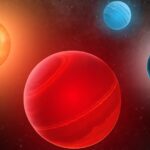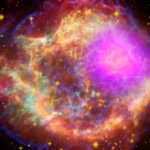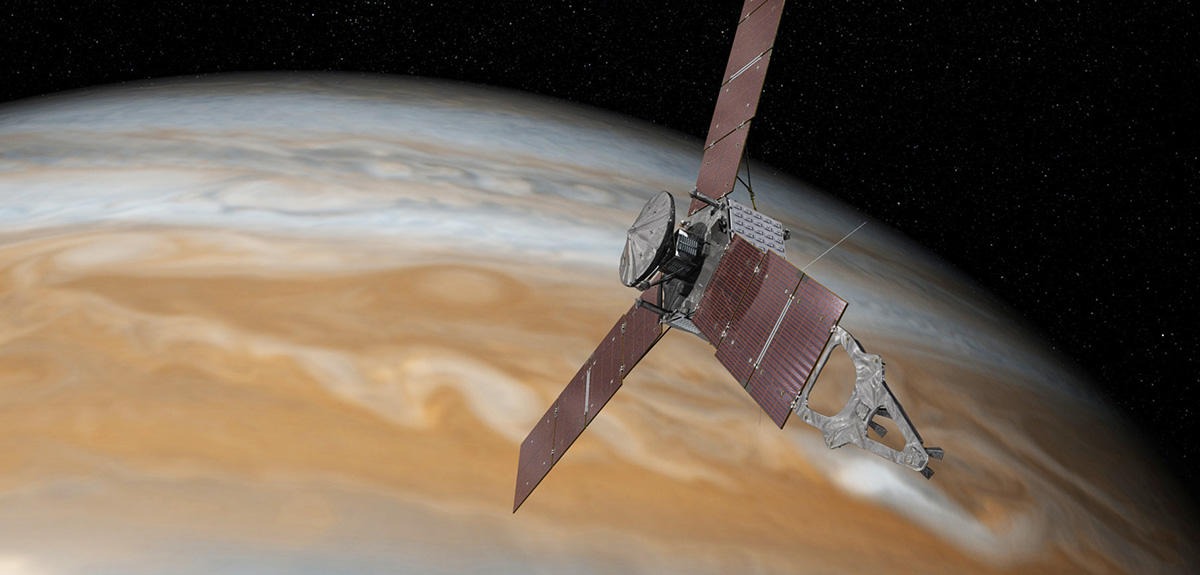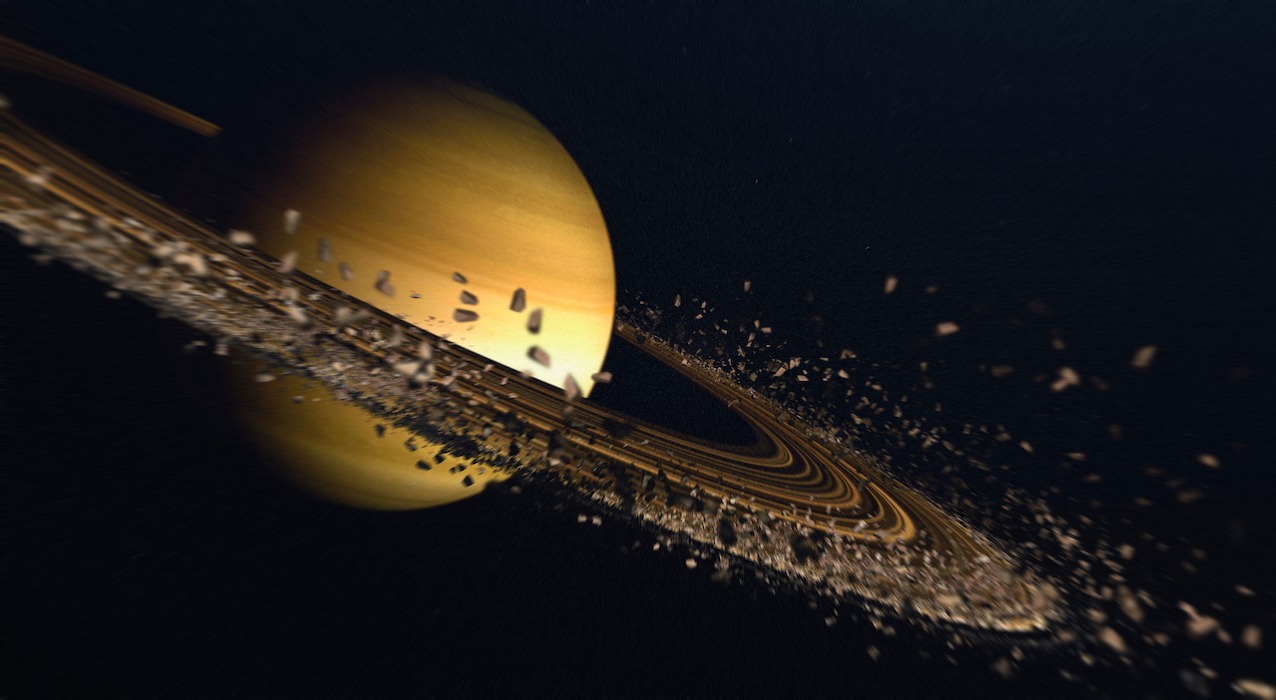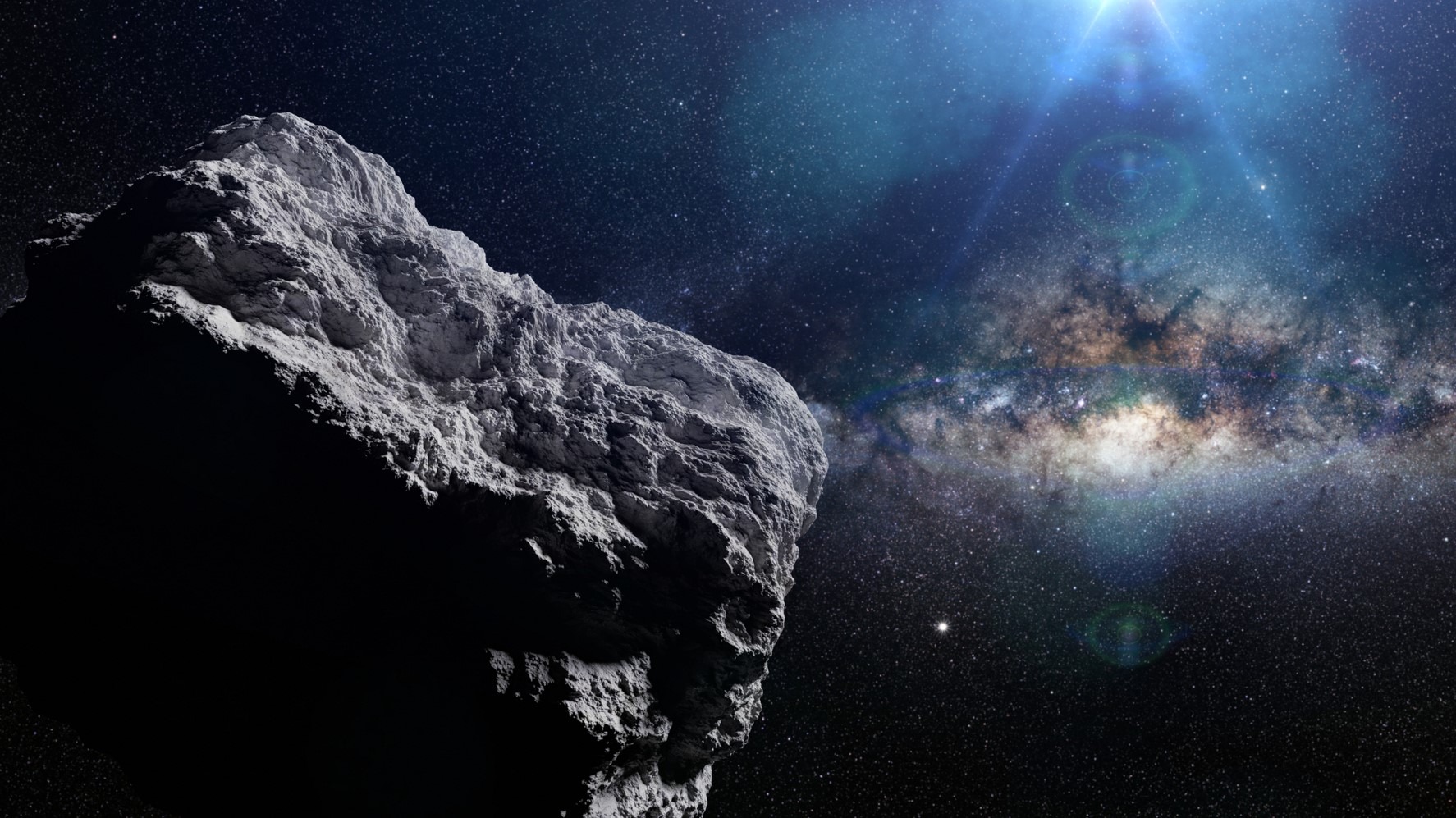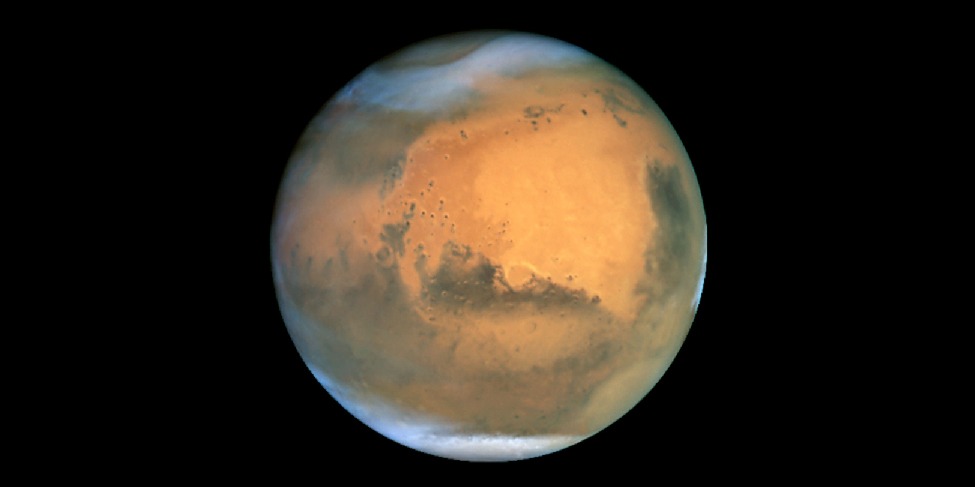From its huge swirling storms to its family of over 90 moons, Jupiter is a world of incredible mysteries. We are still trying to figure out what is inside this giant planet, and we are still looking for answers to some of the biggest questions in planetary science. In this article, we will take a deep dive into the mysteries of Jupiter, exploring its most famous features, the amazing moons that orbit it, and the missions that have been sent to try and unlock its secrets.
What Is Jupiter? The Biggest Planet in Our Solar System
Jupiter is a gas giant, which means it is made mostly of gases, hydrogen and helium, and it does not have a solid surface like Earth. If you were to try and land on Jupiter, you would just sink deeper and deeper into its thick atmosphere. The planet is covered in swirling clouds that form beautiful stripes of red, white, and brown. These stripes are created by winds that are moving at incredible speeds.
Jupiter is a very fast-spinning planet. A day on Jupiter is only about 10 hours long, which is shorter than any other planet in our solar system. This fast spin is what helps to create the powerful winds and storms on the planet.
Jupiter also has a faint ring system, but it is not as visible as the one around Saturn. The rings are believed to be made of tiny pieces of dust from some of Jupiter’s small moons. The planet’s immense size and powerful gravity make it a kind of cosmic vacuum cleaner, protecting the inner planets of our solar system from many comets and asteroids that might otherwise hit them.
The Famous Storm: The Great Red Spot
Jupiter’s most famous feature is its Great Red Spot. This is a gigantic storm that has been raging on the planet for at least 350 years, if not longer. It is a huge, oval-shaped storm that is located in the southern part of the planet. The winds in the Great Red Spot are moving at speeds of up to 425 miles per hour, which is much faster than any hurricane on Earth.
The Great Red Spot is so big that the entire planet Earth could fit inside of it. In recent years, scientists have noticed that the storm is shrinking, and they are still trying to figure out why. The color of the storm is believed to come from small amounts of chemicals, like sulfur and phosphorus, in the clouds. The Great Red Spot is a testament to Jupiter’s powerful and stormy weather, and it is a fascinating mystery that we are still trying to solve.
The Inner Mystery: What Is Inside Jupiter?
Because Jupiter is a gas giant, we cannot see what is inside it. But scientists have some very interesting ideas about its internal structure.
- A Thick Atmosphere: The outer layer of Jupiter is a very thick atmosphere that is made mostly of hydrogen and helium. The atmosphere gets denser the farther down you go. The clouds that we see are just the top layer of this huge atmosphere.
- A Sea of Liquid Hydrogen: The pressure inside Jupiter is so immense that it squeezes the hydrogen gas into a liquid. Scientists believe that Jupiter has a huge ocean of liquid hydrogen.
- A Core of Mystery: At the very center of Jupiter, the pressure and temperature are so high that scientists are not sure what is there. It is believed that the hydrogen gas is squeezed so much that it becomes a kind of liquid metal. This is called metallic hydrogen, and it is believed to be the source of Jupiter’s very powerful magnetic field. It is still unclear if Jupiter has a solid core that is bigger than Earth, or if it is just a thick, super-hot, and dense soup all the way through. The Juno mission is designed to find answers to this mystery.
The inside of Jupiter is a place of incredible pressure and temperature, and it is a mystery that we are still trying to unlock.
A Family of Worlds: Jupiter’s Many Moons
Jupiter has a huge number of moons, with over 90 officially recognized. The four largest moons, which were first discovered by Galileo Galilei in 1610, are called the Galilean moons. These moons are so big that they are each a world in their own right.
- Io: This moon is the most volcanically active place in our solar system. The strong gravity of Jupiter and the other Galilean moons pulls on Io, squeezing it and creating a huge amount of heat inside. This heat causes hundreds of volcanoes to erupt all over the moon’s surface, which is covered in a layer of sulfur and lava.
- Europa: This moon is covered in a thick layer of ice, but under the ice, scientists believe there is a huge ocean of liquid water. The ocean is believed to be in contact with a rocky seafloor, which could provide chemicals and energy for life. The Europa Clipper mission is designed to find out if this ocean could be a home for alien life.
- Ganymede: This is the biggest moon in our solar system, even bigger than the planet Mercury. It is a moon of ice, and scientists believe that it also has a salty ocean under its icy crust. Ganymede is the only moon in our solar system that has its own magnetic field, which is another big mystery.
- Callisto: This moon is also an ice world, and it has a very old and heavily cratered surface. Scientists believe that it also has a salty ocean under its icy crust.
Our Eyes on Jupiter: Missions to the King of Planets
We have been studying Jupiter for decades with missions from NASA and other space agencies.
- The Voyager Probes: In 1979, the Voyager 1 and Voyager 2 probes flew past Jupiter and sent back stunning pictures of the planet and its moons. They were the first missions to get a close-up look at Jupiter, and they discovered the volcanoes on Io and the ring system around the planet.
- The Galileo Mission: In 1995, the Galileo spacecraft became the first mission to orbit Jupiter. It sent a probe into the planet’s atmosphere to study its composition, and it gave us a wealth of information about Jupiter and its moons. The mission also provided strong evidence for the subsurface oceans on Europa, Ganymede, and Callisto.
- The Juno Mission: The Juno mission, which arrived at Jupiter in 2016, is the only spacecraft currently orbiting the planet. Juno is a solar-powered spacecraft that is designed to explore what is inside Jupiter. It is measuring the planet’s magnetic field and gravity, and it is helping us to figure out whether Jupiter has a solid core. The mission is providing new information about Jupiter’s deep atmosphere and its powerful auroras.
The Future: A Closer Look at Europa
The future of Jupiter exploration is very exciting. The focus of the next missions will be on the moons, especially Europa.
- The Europa Clipper: The Europa Clipper mission, which will be launched by NASA, is designed to study Jupiter’s moon Europa. The spacecraft will fly by Europa dozens of times to get a close-up look at its icy crust and to find out more about the ocean under the ice. The goal of the mission is to figure out if Europa could be a home for life.
- The JUICE Mission: The European Space Agency (ESA) has also launched a mission called JUICE (JUpiter ICy moons Explorer). Its goal is to study Ganymede, Callisto, and Europa to find out more about their oceans and their potential for life.
Conclusion
Jupiter is a world of incredible mysteries. From its huge Great Red Spot to its ocean-filled moons, the planet is a perfect cosmic laboratory for us to study. The missions that have been sent to Jupiter have completely changed our view of this giant planet, and they have provided us with a wealth of new information. But there is still so much that we do not know.


